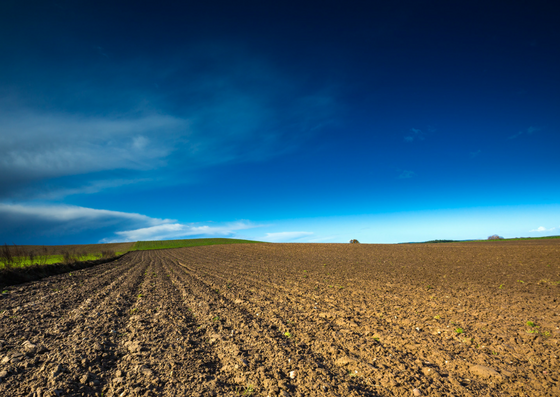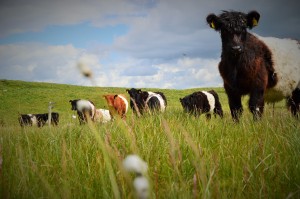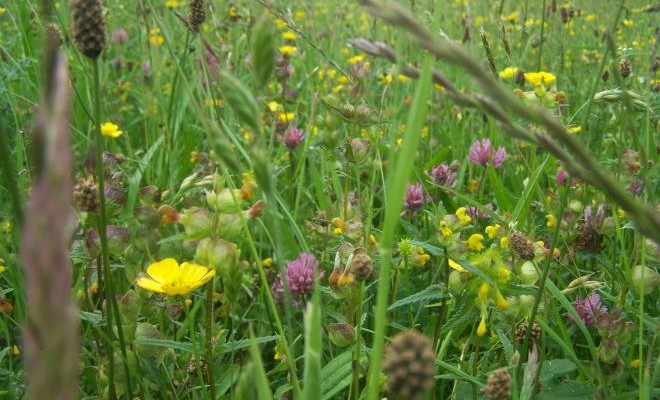
Grass Fed Meat And Carbon. Everyone’s Missing The Point, Here’s Why.
Grass fed Meat and Carbon.
Life’s got a bit hot and steamy in the land management world. All the talk of methane, grass fed meat and carbon is making me rather light headed.
Following George Monbiot’s article in the Guardian and the publication by the Food Climate Research Network, called Grazed and Confused, I was almost drawn down the rabbit hole of throwing more studies at my opponents to try and knock them unconscious in the commonly used ‘death by scientific literature’ defence strategy.
Instead I would like to ask; why are we worried about cows burping and how much Carbon is in our atmosphere?
Well?
I’m not a climate sceptic, far from it. I’ve no doubt humans are making our planet uninhabitable. As a holistic regenerative agricultural consultant, my quest is to step back to better understand the big picture of how we can regenerate the land and grow healthy food in a more sustainable way. The science used to study climate overall is ‘reductionist’ in nature and therefore studies the pieces of a puzzle, but rarely looks at the interacting parts as a whole. This tight focus has led us to missing the biggest opportunity to set our climate back on track. (1)
Walter Jehne, former CSIRO Climate Scientist and Microbiologist, founder of Healthy Soils Australia suggests 4% of the global heat dynamics of the blue planet is governed by CO2, 95% is governed by water. The increase in heating atmospheric water vapour is a result of human activity, but what has actually caused it?
If 95% of the global heat dynamics are governed by water vapour, why are we only talking about CO2?
Cutting down forests, ploughing up land to grow plant food, and polluting our atmosphere has changed and reduced our planets ability to keep the planet cool. But releasing Carbon from the soil into the atmosphere is the result of this damage, it hasn’t necessarily caused this heating.
Most of these landscape changes and weather dependent influences are virtually impossible to measure scientifically; they’re interdependent and totally inseparable. Their influence is greater than the sum of their parts.
You can’t understand water by studying Hydrogen and Oxygen separately. You can’t judge the ‘efficiency’ of a food production system without considering all the functions of that system.
A tree covered landscape with grass covered soil uses sunlight and take in CO2 to make food for microorganisms. The critters store this liquid Carbon in their bodies and ‘pay’ the plant in nutrients absorbed from rock which means we don’t have to use artificial fertilisers. These guys shred and process dead plants and leave behind their biomass to build soil. In a healthy growing soil some microbes called ‘methanotrophs’ absorb methane, some regulate nitrous oxide and there are thousands of other microbes doing millions of jobs cooperatively, most of which we still don’t fully understand and probably never will.
If a soil has structure, and can hold water it can grow a plant. Plants and leaf litter or tree cover will shade and protect the soil from direct sunlight, evaporation and wind erosion; it can be more than 20 degrees cooler at the ground level under the protection of vegetation.

Trees and plants act as air conditioning units transpiring water and further keeping the ground alive with microorganisms ‘dooin their thang.’ Grasslands that include trees and forest systems provide some nuclei that ‘seed’ rain that would otherwise stay in a haze which hugely heat our planet.
You can’t understand the cooling effectiveness of a natural self-organising living system by studying just Carbon or just Methane, that’s rather missing the point and makes arable crops appear comparatively efficient if we’re only judging their environmental benefit through that tiny window. It’s the other functions that have the greatest cooling effect.
There are numerous ways in which increasing our natural habitats and building or soils helps cool our planet. This is covered in Walter Jehne’s video thoroughly HERE.
But for now, we should know that our biggest opportunity to cool the planet is to influence the natural hydrological systems that evolved to make our planet habitable and cool in the first place.
The reason Carbon is so important is not because it’s inherently heating, but because it needs to be in the soil allowing our plants to be able to grow and if it’s in the atmosphere it’s not doing its job in the biosphere. Soil needs carbon in it to build structure so that it can hold water, hold up plants and allow microbes and nutrients to flow to where they are required to help the natural systems cool the planet.
When we’re talking about the effectiveness of different diets and grazing systems to sequester Carbon we need to remember that the reason we are trying the reduce atmospheric CO2 in the first place is that we’re trying to cool the planet.
The biggest opportunity we have to cool the planet is to increase the process of photosynthesis. We can do this in several ways by increasing:
-
the number of plants growing in an area.
-
the duration of season that the plants can grow and photosynthesise.
-
the rate of photosynthesis.
In holistic management – particularly holistic planned grazing – our entire focus is on increasing the effectiveness of our ecosystem processes including the solar energy flow. This is contrast to other grazing techniques and a very different approach to most methods of crop production that leave a high percentage of ground bare most of the year.
Every year the biosphere draws down about 120 billion tons of CO2; about half is through photo plankton in the oceans and about half is through green growing plants on the land. If we improve the management on existing farms and improve the condition of previously degraded land by using regenerative agriculture to build our soils and increase the photosynthetic capacity and rate of plants – a tried and tested practice – we could easily achieve 20% increase in CO2 draw-down. That’s a potential 12 billion tonnes – all the world’s annual emissions and some of the legacy load.
Our clever advances in creating bagged fertility and poisons to kill ‘pests’ mean we’re leaching billions of tons of excess nutrients and poisonous substances into our seas which cause algal blooms, sucking out the oxygen and killing life in vast areas of ocean. Fewer plants, fish and whales equal less CO2 being drawn down or cycled through our biosphere. Properly managed grazing can actually be used as a buffer filter for manure and other pollutants.

We have developed techniques to grow crops without having to till the soil leaving the ground protected and covered and healthy enough to produce enormous amounts of nutritious food. No leaching of fertiliser or poisons and no killing of the seas.
As a by-product of regenerating the soil and increasing the growing duration and density of green plants, we happily, but accidentally address some of the other causes of excess heat in the atmosphere.
Every year now 300-400 million Ha around the planet is burning, this enormous loss of cooling biodiversity is mostly preventable through regenerative land management, deeper soils and properly cycled vegetation often helped by grazing or wild animals. Wildfires and managed burning not only hugely increase atmospheric pollution but more importantly, reduce the photosynthetic capacity on all those damaged Hectares.
A large part of the world isn’t suitable for growing crops and vegetables due to rough terrain, low rainfall or inappropriate climate. These areas can however grow perennial plants, trees and grass. Sadly, we can’t eat grass, but we clever humans got around this by grazing or hunting animals then eating the animals or using their milk. These animals offer a lifeline of nourishment to rural communities throughout the world and help balance the nutritional deficiencies that inevitably occur if we just ate efficient grains.
With this in mind, does it seem sensible suggesting that we focus on growing more ‘efficient’ plant foods that will inevitably lead to bare soil, ploughing, intensive cultivation, dust, fertiliser use, pesticide use and pollution – all things which have a seriously negative effect on the natural cooling hydrological systems?
I think not.
In holistic management, we use a set of questions to ‘test’ any decision we make. You know, like setting policy that will affect the rest of the world. The first question we ask is; ‘does this action address the root cause of the problem?’ I’m not sure this important question has been given enough consideration.
Some re-wilding organisations and supporters see the potential abandonment of 30 million hectares across Europe by 2030 as an opportunity for wildlife. It’s certainly true that some intensive and set stocking grazing systems are anti wildlife and have seriously degraded upland soils, but it doesn’t have to be this way.
Our wilderculture approach to managing land, which uses holistic planned grazing, builds soil and increases wildlife dramatically. Those degraded European marginal lands may currently be producing fewer calories per Hectare than soya or wheat, but let’s not forget the total calories produced over these vast uplands will still be huge, and the quality of the produce will be far more nutrient dense than crops. All this lost food will have to be produced from our ever degrading crop-able land, and the FAO suggest we may only have 60 harvests left.
Losing the opportunity to better manage 30 million hectares for both humans and wildlife is in my mind a tragedy, not an opportunity.
Comparing the productivity of food growing methods in terms of protein or calories without considering all the other consequences of growing that crop is so ‘reductionist’, it’s totally meaningless.
Why spend hours arguing that soya is a more efficient use of land than rearing animals? We don’t need this marginal land to be as productive as cropland. It can’t even grow crops anyway and is an unfair comparison. Well managed pasture is a HUGE photosynthetic cell that cools the planet, filters pollution, prevents heat hazes, keeps the water in the ground and rivers and as a by-product produces a nutrient dense food source that humans are well adapted to eat.
Holistic planned grazing done well allows a huge increase in the number of livestock that can be produced per Hectare which stacks up impressively calorie for calorie against other food crops. It can be a haven for wildlife and a wonderful place to spend time too. Grazing animals are simply a tool that can be used to regenerate land or degrade it – it’s the person in charge that matters!
Compare this with an ‘efficient’ crop field and you’ll find bare hot soil, dust which leads to heat haze, so little wildlife that you could dig all day and not find an earth worm, and huge pollution issues that kills wildlife and harms people. Could we also note that it tastes of nothing, and offers a poor range of important nutrients.
‘Simple’ solutions such as ‘eat vegan’ followed by attacks on truly sustainable livestock production methods do nothing to address our most serious global issues and the only outcome of this judgemental approach is to confuse people into inertia.
Livestock based food production can degrade soil, be highly inefficient, cruel, and produce very poor quality meat. On the other hand, it can produce some of the most nutrient dense food available to humans and and be used as a tool to rewild land.
Plant food production can build soil, support wildlife and produce a range of nourishing foods. On the other hand it can come from bankrupt soils, poisoned landscapes, be harvested by exploited people, be harmful to health and offer poor nourishment.
Let’s stop pretending it’s simple.
Once upon a time we had to grow it, kill it, harvest it, store it and cook it. Surely it can’t be too much to ask that we do some research and educate ourselves so we can make an truly informed choice! We need to support systems that build soil and cool the planet.
The Savory institute are even developing a label to make it easy for you to know which foods are regenerating soils through their land to market program and I have also developed a holistic eating framework called the ‘Wildervore approach‘ to help you build your personal sustainable healthy eating plan.
Attempting to cool the world by just focusing on Carbon and Methane is like helping a person with a high fever by analysing the sodium and potassium in their sweat, then offering them salt supplements. What they really need is a glass of water and better immunity to future infection!
I would love to hear your comments and please do share on social media. Caroline
Please join our mailing list for more articles like this.
Even if you are concerned about grass fed meat and Carbon others have done a great job of explaining that good regenerative farm systems that include livestock can in fact sequester a lot of Carbon too. Take a look at the counter arguments here.


No Comments